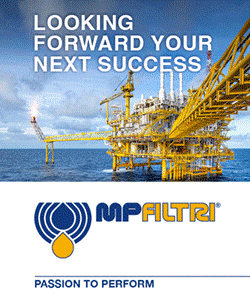 Obetego Inc is a Glen Mills, Pennsylvania based company that has created and patented an Energy Efficiency system titled the Envirocage. For over a decade, Obetego has been committed to educating refineries, engineering firms, and code and standard developers, of the advantages of utilizing this system vs the traditional costly methods. Our system provides a more energy efficient alternative for personnel protection that can increase yields, completely eliminates CUI (corrosion under insulation), where applied, and make inspections more efficient, thorough, and reliable.
Obetego Inc is a Glen Mills, Pennsylvania based company that has created and patented an Energy Efficiency system titled the Envirocage. For over a decade, Obetego has been committed to educating refineries, engineering firms, and code and standard developers, of the advantages of utilizing this system vs the traditional costly methods. Our system provides a more energy efficient alternative for personnel protection that can increase yields, completely eliminates CUI (corrosion under insulation), where applied, and make inspections more efficient, thorough, and reliable.
ENVIROCAGE
Envirocage is an industry leader in the protection of personnel from dangerous hot surfaces, while significantly increasing efficiency and reliability over traditional insulation. We can provide Engineering Cooling Studies that include energy savings per hour/day/ month for your geographic area, along with cost to install and/or remove existing insulation. Our highly experienced Engineers, Designers, and Construction Costs Estimators can field evaluate all obstructions,surface preparation, purchase and installation costs, and submit break even duration after receiving your energy costs.
ENVIROCAGE BENEFITS
- Complete protection from hot surface burns
- Reduces cooling costs and reduces temperature of cooling medium.
- Reduces burden on cooling system.
- Can increase yield when temperature limited.
- Obetego will design, fabricate and install our energy efficient system or assist and instruct in the installation of the system.
- Enhances product quality or purity
- Allows complete visual inspection
- Creates ease & more efficent UT inspection
- Completely eliminates, not mitigates CUI.
- Allows for verification of piping system
- Completely reuseable after pipe alterations and maintenance
- Reduces labor installation costs
- Cools hot flanges while protecting personnel

HEAT LOSS HISTORY
Years ago many employees of industry burned themselves on the job by coming into contact with hot piping & equipment. The larger companies of industry decided to combat this issue by incorporating standards to apply insulation to anything above a certain temperature to prevent burns. At the time this was expected to be only the expense of adding insulation to the hot surfaces. This included the material costs and the installation costs. That was also back at a time when cooling water was considered almost free. Now with environmental regulations limiting estuary zones to an intake to discharge temperature differential to only a few degrees is costly to get rid of the excess heat. Every circuit or pipeline that is insulated for personnel protection holds heat in the system. If this circuit is feeding another process that requires cooling, or a circuit that requires cooling, it is financially advantageous to allow any heat to dissipate naturally. The most obvious circuits are systems that have an obvious advantage for cooling like any distillation, alkylation, or cooling water approach (recirculation) line. But its actually all of the systems that lead to all cooling systems. Any product, gas stream, or waste stream that requires cooling, or that burdens the cooling water overall load to the refinery system can be cooled ambiently to a certain degree for not electrical or mechanical cost. This even includes steam trap discharges into a sewer that later requires cutting discharge temperature to the waste basin. Crude Oil comes into the refinery via freighter / or pipeline. The first stage in the refinery is usually the Crude distillation. This separates out different product according to their boiling range. The ranges vary from 100F to 1050F Butanes & lighter at the top, light & heavy naphtha, kerosene, light gas oil, atmospheric gas oil, Vacuum gas oil, and vacuum reduced crude. Then some products go through other heated processes. But eventually almost everything including waste products and cooling media goes through a cooling process to get to its final destination, weather this be tank car, rail car, pipeline, barge, river or creek discharge, etc. The temperature for tankage or shippingis usually just below 200F, and the temperature for discharge varies. The overall situation we are reminding is that the refinery and chemical process starts off at a very high temperature and gets cooler and cooler. Perry’s and the Practical Process Engineering manual show that most exchangers, pumps, and fans are used for cooling and not heating. This of course zeros out economizers as a push.
For more information:














